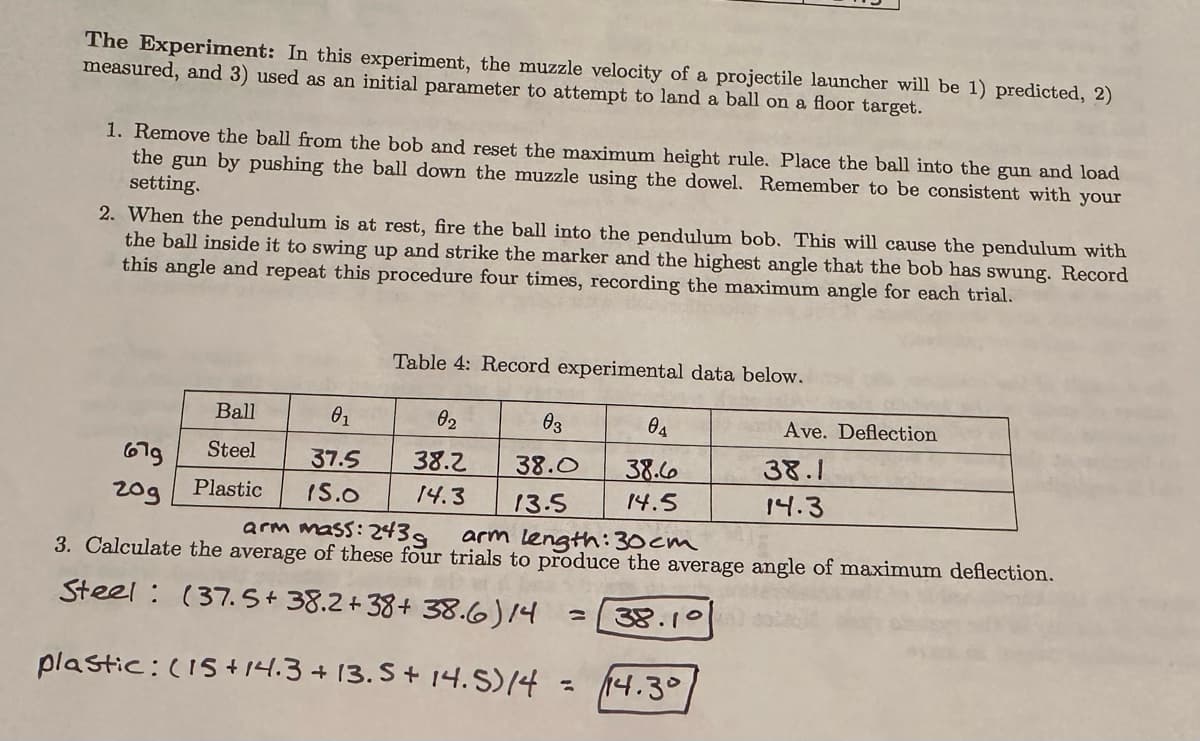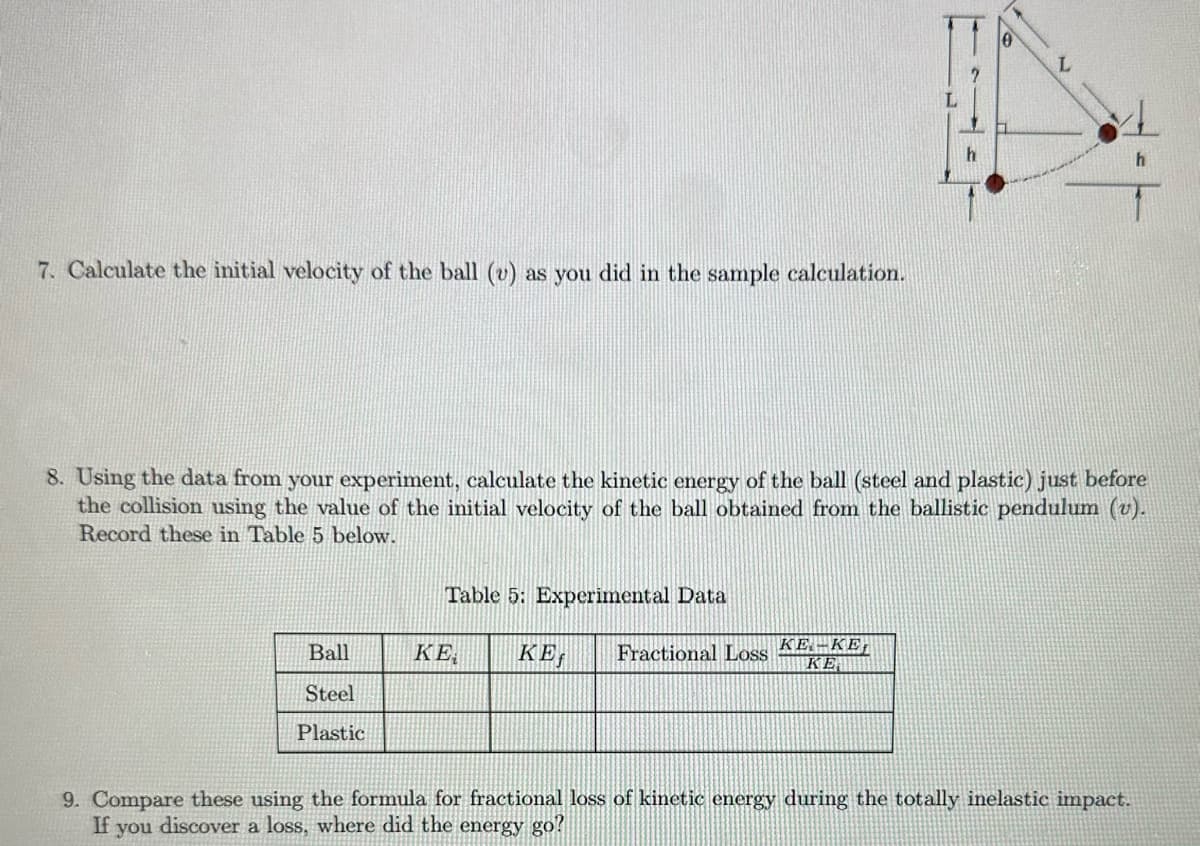Using the data from your experiment, calculate the kinetic energy of the ball (steel and plastic) just before the collision using the value of the initial velocity of the ball obtained from the ballistic pendulum (v). Record these in Table 5 below. Ball Steel Plastic Table 5: Experimental Data ΚΕ KE Fractional Loss KE-KET KE
Using the data from your experiment, calculate the kinetic energy of the ball (steel and plastic) just before the collision using the value of the initial velocity of the ball obtained from the ballistic pendulum (v). Record these in Table 5 below. Ball Steel Plastic Table 5: Experimental Data ΚΕ KE Fractional Loss KE-KET KE
Glencoe Physics: Principles and Problems, Student Edition
1st Edition
ISBN:9780078807213
Author:Paul W. Zitzewitz
Publisher:Paul W. Zitzewitz
Chapter1: A Physics Toolkit
Section: Chapter Questions
Problem 54A
Related questions
Question
I need help finding initial ke, and final ke.

Transcribed Image Text:The Experiment: In this experiment, the muzzle velocity of a projectile launcher will be 1) predicted, 2)
measured, and 3) used as an initial parameter to attempt to land a ball on a floor target.
1. Remove the ball from the bob and reset the maximum height rule. Place the ball into the gun and load
the gun by pushing the ball down the muzzle using the dowel. Remember to be consistent with your
setting.
2. When the pendulum is at rest, fire the ball into the pendulum bob. This will cause the pendulum with
the ball inside it to swing up and strike the marker and the highest angle that the bob has swung. Record
this angle and repeat this procedure four times, recording the maximum angle for each trial.
67g
20g
Ball
Steel
Plastic
0₁
37.5
15.0
Table 4: Record experimental data below.
02
03
38.2 38.0
14.3 13.5
04
38.6
14.5
Ave. Deflection
38.1
14.3
arm mass: 243g
arm length: 30cm
3. Calculate the average of these four trials to produce the average angle of maximum deflection.
Steel: (37.5+ 38.2+38+ 38.6)14 = 38.10
plastic: (15+14.3 + 13.5+ 14.5)/4
14.30

Transcribed Image Text:7. Calculate the initial velocity of the ball (v) as you did in the sample calculation.
Ball
Steel
Plastic
8. Using the data from your experiment, calculate the kinetic energy of the ball (steel and plastic) just before
the collision using the value of the initial velocity of the ball obtained from the ballistic pendulum (v).
Record these in Table 5 below.
ΚΕ
Table 5: Experimental Data
KES
h
Fractional Loss ΚΕ. – ΚΕ,
ΚΕ.
h
9. Compare these using the formula for fractional loss of kinetic energy during the totally inelastic impact.
If discover a loss, where did the energy go?
you
Expert Solution
This question has been solved!
Explore an expertly crafted, step-by-step solution for a thorough understanding of key concepts.
This is a popular solution!
Trending now
This is a popular solution!
Step by step
Solved in 5 steps with 1 images

Knowledge Booster
Learn more about
Need a deep-dive on the concept behind this application? Look no further. Learn more about this topic, physics and related others by exploring similar questions and additional content below.Recommended textbooks for you

Glencoe Physics: Principles and Problems, Student…
Physics
ISBN:
9780078807213
Author:
Paul W. Zitzewitz
Publisher:
Glencoe/McGraw-Hill

College Physics
Physics
ISBN:
9781938168000
Author:
Paul Peter Urone, Roger Hinrichs
Publisher:
OpenStax College

Glencoe Physics: Principles and Problems, Student…
Physics
ISBN:
9780078807213
Author:
Paul W. Zitzewitz
Publisher:
Glencoe/McGraw-Hill

College Physics
Physics
ISBN:
9781938168000
Author:
Paul Peter Urone, Roger Hinrichs
Publisher:
OpenStax College